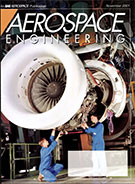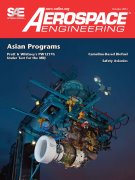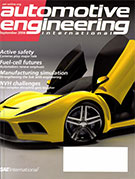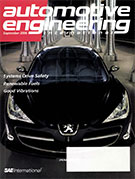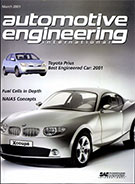Magazine

SAE Off-Highway Engineering 2012-03-08
2012-03-08
Look Ma, no driver Unmanned vehicles evolve quickly as processors, sensors improve performance. Calling all hydraulics engineers As the industry knows all too well, hydraulics engineers are hard to come by; a look at how companies are hiring, training, and, most important, retaining engineers. Making diesels quiet and clear Researchers look at the relative influence of gear design parameters on the rattle noise of a diesel engine timing gear train.












